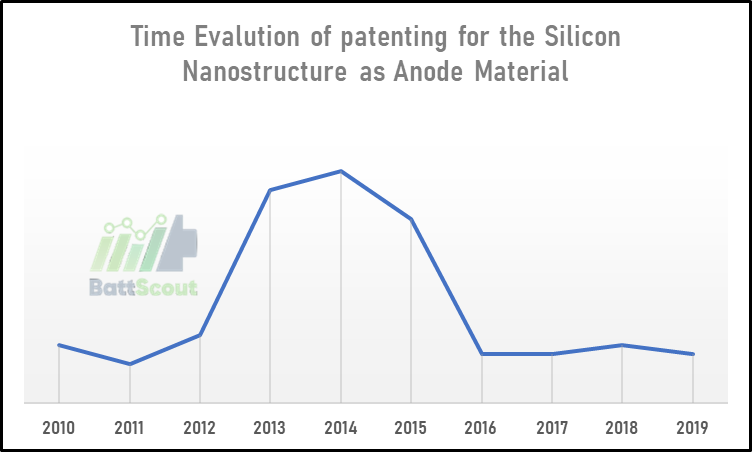
Silicon Nanostructures as a Desired Anode Materials in Solid-State Batteries
The silicon anode material patent landscape report, published in 2020, indicates that the number of patents regarding silicon nanoparticle synthesis increased to 2015, and afterward, patents covering nanoparticle morphology declined significantly. The use of silicon nanoparticles as an anode in conventional lithium-ion batteries (liquid electrolytes) presents several challenges. Nanostructure materials show high initial capacities because of their high specific areas, but this causes side effects on their ability to create stable solid-electrolyte interphases. This means a high specific area of anode materials leads to more electrolyte-electrode interaction and, thus, a broad SEI. Consequently, the first-coulomb efficiency in the electrode becomes low, and weak cycle ability results.
According to the chart below, the number of patents for silicon nanostructures synthesis (as anode material used in Lithium-ion batteries) has decreased.

What about the use of solid electrolytes between electrodes? According to the patent data, using nanoparticles as electrode material can enhance the solid electrolyte's contact with the electrode (electrode-solid interface), thus improving ion conductivity.
Therefore, there is a high probability that nanostructured electrodes be used in all solid batteries in the near future and benefit from the advantages of nanostructures.
Since the main electrode material is microstructure currently, therefore, it is expected that electrode material manufacturing will undergo a significant change as a result of advancements in using solid electrolytes.

